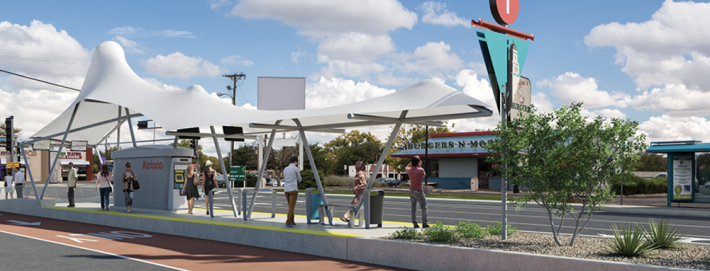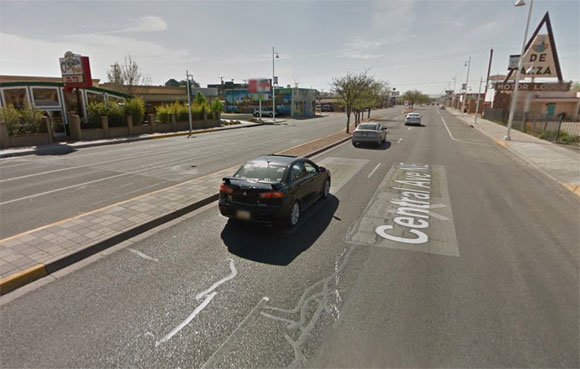
Recently, Albuquerque has gotten a good look at the insanity that can grip people when confronted by the idea of reallocating street space from cars to transit. The city is planning to add center-running bus lanes along Central Avenue -- its main street -- and for months public meetings about the project featured people standing on chairs and shouting, actual fights, and the occasional police escort out of the building.
But this week, cooler heads prevailed. The Albuquerque City Council voted 7-2 to accept $70 million in federal money and get started on the project, called ART, which is backed by the city's Republican mayor. Now, after a long and tense drama, it looks like ART is a go.
Dan Majewski helped found YES ART NOW, a grassroots group that supported the project. He is elated. Majewski said council members had a well-reasoned debate and weren't swayed by opponents who said bus lanes would ruin their neighborhood.
"I think it’s an absolute game changer," Majewski said. "I think that’s part of why there’s been so much vitriol around the project."
"It’s really symbolic of the culture shift," he added. "What we witnessed [Monday] night was historic: the city voting to prioritize something other than automobiles. We’ve never seen a situation where people are consciously voting to take away lanes for cars and give them to transit."
With the ART, the stars seem to be aligning for Albuquerque to become more than "a collection of ... nondescript subdivisions connected by monotonous commercial strips," as one local writer put it.

The Central Avenue corridor carries 42 percent of the region's transit passengers and is one of the few areas with decent pedestrian infrastructure. During peak hours, ART buses will run every 7.5 minutes along the nine-mile route. Faster, more reliable service will improve trips for current riders and hopefully attract more.
In addition, the city has taken on a total rewrite of its land use plan, Majewski says, which is supposed to be released at the same time ART is completed -- as soon as September of 2017. A federal grant of about $860,00 will be devoted to planing transit-oriented development around ART stops.
Majewski says this should be just the beginning for Albuquerque.
"What I hear most often is, 'Why aren’t we using this money to improve other parts of the transit system?'" he said. "We’re having this amazing community dialogue about our transit system that we’ve never had before."





